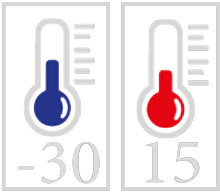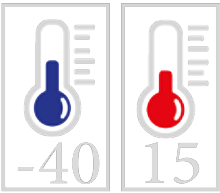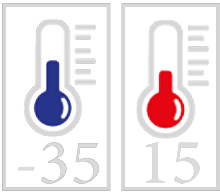Nominal Capacity ( KW ) : ۵ - ۴۸
------------------------
Fan Specifications :

Nominal Capacity ( KW ) : ۵ - ۱۲۴
------------------------
Fan Specifications:

 Φ630 56-124KW
Φ630 56-124KW
Nominal Capacity


Npminal Capacity:( KW ) : 10-258
------------------------
Fans Specifications:

 Φ800 50-258KW
Φ800 50-258KW
Sabcool Evaporators
The evaporator is one of the essential components of refrigeration and air conditioning systems. In fact, the evaporator heat exchanger, made of coiled tubes, is responsible for cooling production. In this heat exchanger, the refrigerant liquid or gas passes through the coiled tubes, producing coldness. After passing through the coiled tubes, the refrigerant enters the evaporator and turns into vapor. This process involves absorbing heat from the surrounding environment and cooling the space. Then, the refrigerant is returned to the compressor in gas form.
Evaporators are used in industrial applications in refrigeration units, freezing tunnels, as well as air conditioning equipment like chillers and split ducts for smaller and residential applications in devices such as refrigerators for cooling purposes.
For example, in gas and split air conditioners, the evaporator coil is placed inside the internal wall panel to cool the environment by absorbing heat from the warm air inside. Also, in chillers, the evaporator coil, which is made of copper tubes, absorbs heat from the water and cools it down. Then, this cooled water is used for cooling purposes.
In general, evaporators are crucial components in air conditioning and cooling industries responsible for cooling air or water.
Evaporator Operation
Evaporators function by absorbing heat from their surroundings through the evaporation of the refrigerant liquid. The refrigerant, at low pressure, absorbs heat from the environment, turning into gas, ultimately reducing the temperature of the surrounding evaporator environment. For instance, in an air conditioning system, the evaporator is located inside the device’s chamber. Air passes over the refrigerant pipes, transferring its heat to the refrigerant. This process cools the air, which is then transferred to the desired space through ventilation channels.
In a refrigeration system, the evaporator is located outside the device. Water passes through it via a pump, transferring its heat to the refrigerant. This cooled water is then transferred to a coil or an air handler. Consequently, the coil or air handler transfers the cool water to the air, cooling it down.
It’s important to periodically service evaporators to ensure efficient energy exchange on their exchange surfaces.
Advantages of Evaporators
To understand the advantages of evaporators, one must first become familiar with each type and highlight their features and benefits separately.
Evaporators come in various types made of different materials and structures based on their application. Some common types of evaporators include:
1. Shell & Tube Evaporator:
This type of evaporator is widely used in chiller production, known for its efficiency, repairability, post-sales services, and long lifespan.
Plate Evaporator:
These are efficient due to their compact size and high performance, making them popular in various industrial applications.
Ice Bank Evaporator:
Used in industrial chillers, these can store and produce large volumes of cold water, suitable for various cooling applications.
DX Air-Cooled Evaporator:
These evaporators cool air using refrigerants and are used in cold storages for various perishable goods.
Vahid Refrigeration Industries Group is one of the leading manufacturers of evaporators in Iran, offering a range of high-quality products tailored to global standards. Their evaporators are known for exceptional quality, use of premium materials, high efficiency, and long lifespan. They provide valuable services through their extensive network of authorized sales and installation agents nationwide. For more information or to order evaporators, you can contact them through the phone numbers provided on their website.


